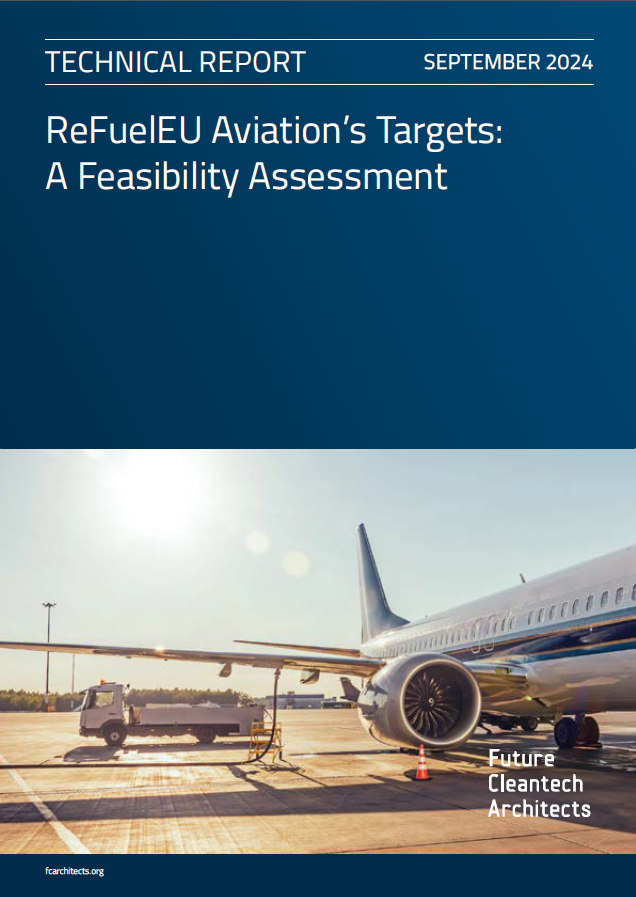The EU benefits from a highly active aviation sector that, on average, consumes anually 10-15% of all the global jet fuel produced. The sector contributes significantly to EU annual emissions and makes up 14% of its transport emissions, second only to road transport. Emissions from aviation have been steadily rising in the EU, increasing by 30% from 2013-2019 and accounting for 5% of the EU’s total emissions in 2019. Following the impacts of COVID-19, flight demand is on the rise once again and is almost back at 2019 levels. Thus, there is significant pressure on the sector to reduce its emissions and align with the EU’s overarching 2050 climate goals.
As acknowledged by the EU, solutions such as all-electric and hydrogen planes are still in their testing phase and will play a limited role in decarbonization efforts over the next two decades. The EU has also identified the untapped potential of SAFs as drop-in fuels to reduce emissions from the sector by 2050. In 2023, the EU introduced the ReFuelEU Aviation regulation, a SAFs uptake mandate with progressively increasing minimum SAF targets – including sub-targets for synthetic jet fuels – until 2050. Demand is expected to continue outstripping efficiency improvements in the EU, with fuel consumption rising by 50% by 2050 (relative to 2019). This will be accompanied by an exponential growth in the share of SAFs, both bio- and synthetic, by 2050 from current levels.
If the regulation’s minimum targets are met, SAFs will be the largest contributor to the final fuel mix in 2050, at 70%. Today, the maximum production capacity for SAFs in the EU remains minimal at 0.24 Mtoe/year, or <1% of consumption. This analysis addresses key questions regarding the feasibility of meeting ReFuelEU Aviation’s targets. Considerations include the availability of feedstocks for biofuels, whether the EU is equipped to produce the necessary quantities of bio- and synthetic jet fuels, and the amount of clean electricity needed to produce the requisite amount of synthetic jet fuels by 2050.
